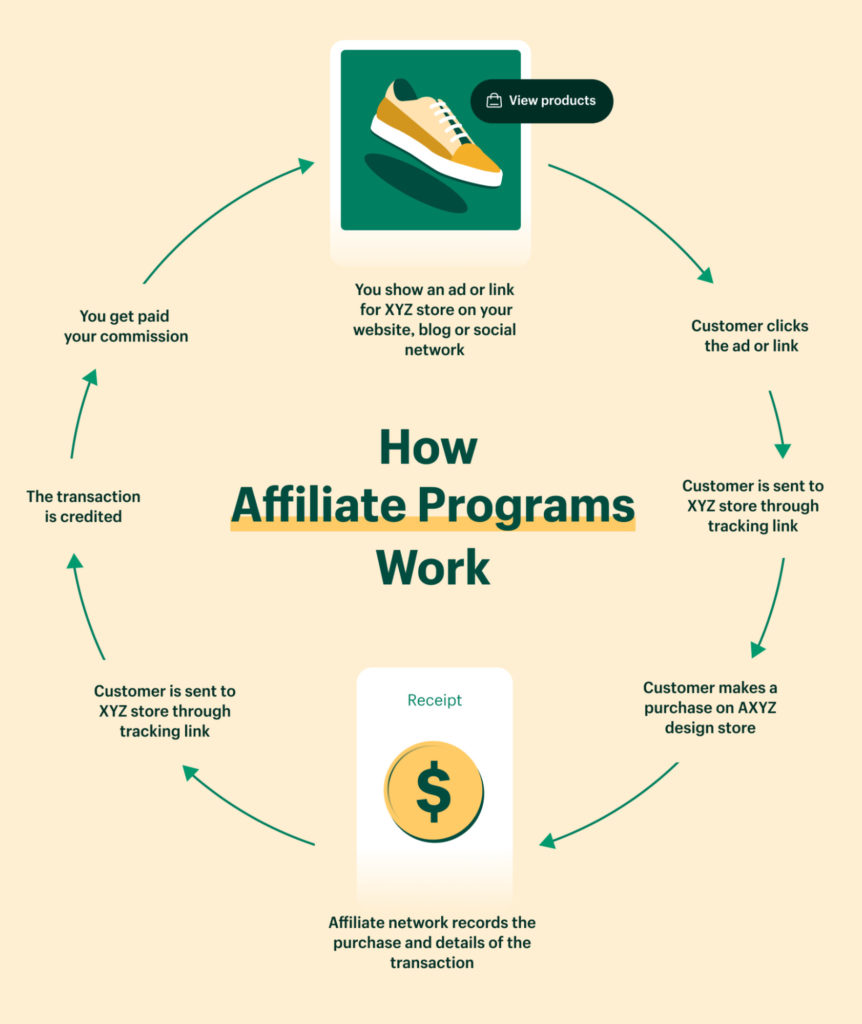|
Getting your Trinity Audio player ready...
|
This is an excerpt from our free-to-download report, eCommerce in Publishing: Trends & Strategies
In this chapter, we examine the growing prominence of eCommerce in publishers revenue strategies and the role that COVID-19 has played in accelerating this trend.
An established revenue formula
For many publishers, affiliate relationships will be their first – and often primary – foray into eCommerce.
As eMarketer has explained, these revenues come from “commissions earned on conversions or clicks they drive to a brand or retailer through affiliate links placed in content on their sites or other channels, like their social media accounts and email newsletters.”
“It is a monetization model,” Shopify observes, “where an affiliate partner… is rewarded a payout for providing a specific result to the retailer or advertiser.” “Typically, the result is a sale. But some programs can reward you for leads, free-trial users, clicks to a website, or getting downloads for an app.”

Globally, the affiliate market – which encompasses cashback and reward sites, as well as publishers and other content creators, social networks and other delivery mechanisms – is worth over $12 billion a year. In the U.S. alone, affiliate marketing spend is projected to reach $8.2 billion in 2022, up from $5.4 billion in 2017. Put simply, with values like these, this is too big a market for publishers to ignore.
Affiliate revenue’s COVID bump
Prior to the COVID-19 pandemic, a number of publishers – such as BuzzFeed, Condé Nast, Meredith, Hearst, and Vox Media were already embracing the potential for eCommerce, and in particular the opportunities for generating affiliate revenue.
However, with the COVID crisis acting as a catalyst for increased online shopping, more publishers – and marketers – have embraced this space. The move appeared to pay dividends for some of these companies.
By August 2020, according to Dunia Silan, VP Revenue for Europe, the Middle East and Africa at Skimlinks – an affiliate marketing platform – the Top 50 U.K. publishers generated £86 ($113.42) in average revenue per article, up by more than 100% in the past five months.
They were not alone in this success. On the other side of the pond, New York Magazine’s shopping site, The Strategist, saw an 85% year-over-year increase in revenue during the second quarter in 2020. Hearst UK saw even bigger numbers, witnessing 322% growth in eCommerce revenue for the same quarter compared to the same period a year previously. Former Shopify CTO Jean-Michel Lemieux tweeted in April 2020 that “our platform is now handling Black Friday level traffic every day!”
Although these record-breaking numbers were a by-product of a very specific time period, the eCommerce momentum enjoyed by many publishers has continued (albeit at a slower rate). Future plc’s interim results for the six months up to the end of March 2021, for example, noted that their eCommerce affiliate revenues were up 116% (worth £85.2 million) compared to 2020.
As a result of longitudinal shifts in consumer habits and the continued growth of spending in this space by marketers and brands, fresh forays into eCommerce, and affiliate revenue strategies, continue to be seen from a wide variety of different publishers.
Affiliate approaches in action
Perhaps the most obvious example of ways in which publishers are making money through affiliate revenues can be seen in the rise of recommendation sites and verticals.
In the U.K, The Sun, a British tabloid, now employs five people dedicated to producing Sun Selects, a collection of buying guides and product recommendations, as well as 10-15 freelancers.
At another British outlet, The Independent, their Indy Best section has continued to expand, in part due to COVID-era shopping habits. The site, which offers product reviews and buying guides, “doubled the size of the team… to 16 people, including ten full-time editorial roles, during the pandemic,” Press Gazette has reported.
“This [affiliate marketing] is a long-term commitment, and was before the pandemic,” said the Independent’s managing director Christian Broughton. “We are accelerating as fast as we can to grow this and I don’t anticipate it’s going away.”
Alongside traditional affiliate approaches – such as dedicated review sections and embedding shopping links in specific articles (see, for example, these articles on BuzzFeed highlighting the best women’s white t-shirts, toilet paper and shower curtains) – multiple publishers are also setting up online shops. These digital stores can take a number of different forms, including those focused on generating affiliate sales.
The home design magazine Dwell, is just one publication that has adopted this approach. Aside from offering articles, guides to various home projects and links to contractors, their website also features an online shop that offers “expertly curated selection of finely crafted home, office, travel, and lifestyle products.” Clicking on an item in Dwell’s store takes you through to the third-party vendor where you can complete your sale.
What’s next? How affiliate relationships are changing
The future for affiliate revenues offers something of a mixed bag for publishers.
On the one hand, you have an increasing number of players – like Vice – moving into this space. Others like Gannett, have expanded their operations, while the New York Times’ decision to put their review website, Wirecutter, behind a paywall (and to offer a standalone subscription for it) reflects the confidence they have in this product.
Meanwhile, the emergence of affiliate technology and networks like those offered by companies such as Tipser, Skimlinks, Sovrn and Rakuten, can do much of the hard technical work for publishers – offering CMS and other digital solutions to support eCommerce activity – as well as acting as the conduit between publishers and merchants.
At the same time, publishers also need to be wary of putting all of their eggs in one (online shopping) basket. The decision by major retail partners like Amazon and Walmart to cut the commission they pay their affiliate partners, may impact a publisher’s bottom line and the effectiveness of their affiliate strategy.
Publishers also need to be cognizant of the fact that online habits are changing, and there are multiple ways that they can generate eCommerce revenue. As we shall see, affiliate revenues are not the only game in town.
Outlets like BuzzFeed, for example, are experimenting with direct-to-consumer options, enabling audiences to purchase directly from their site – or social feeds – without having to click away to a third party.
Moreover, as online shopping on social networks becomes more commonplace (these platforms are already influential in shaping many purchasing decisions), so publishers will need to refine their affiliate strategies by factoring in affiliate and eCommerce opportunities across their social channels too.
All of this is to say, as Web Publisher PRO put it, “although affiliate marketing is not a silver bullet, it can be an important part of a publisher’s larger approach to website monetization.”
In particular, they note, “digital publishers are seeing the greatest gains when they combine real-world events (like the pandemic or upcoming seasonal weather events) with online retail.”
This is particularly true around major shopping periods, such as Black Friday, Cyber Monday and Singles Day, foci that are already important revenue peaks for a number of publishers.
“Over the past three years, Meredith has seen more than 100% year-over-year growth in affiliate revenue [thanks to commerce content],” disclosed Chloe Reznikov, General Manager of Commerce Content and Strategy at Meredith Corporation, recently. “During the 2020 holiday season, Meredith drove $35 million in Prime Day sales and $36 million in Black Friday/Cyber Monday sales via our commerce content program.”
What we are seeing, therefore, is an increasingly busy affiliate space, as an ever-growing number of publishers muscling into this space.
Increased competition from other media companies, the emergence of social commerce and the ability to shop on social networks, coupled with a need to avoid overreliance on a single partner or platform, are all strategic considerations that publishers need to be cognizant of.
Nevertheless, this is a growing consumer market too. And audiences are becoming increasingly used to seeing affiliate links alongside the content they are consuming. As a result, because of the commercial and content opportunities affiliate revenue can generate, it’s clear that affiliate revenue will continue to be part of publishers’ eCommerce strategies for some time to come.
This is an excerpt from our free-to-download report, eCommerce in Publishing: Trends & Strategies



